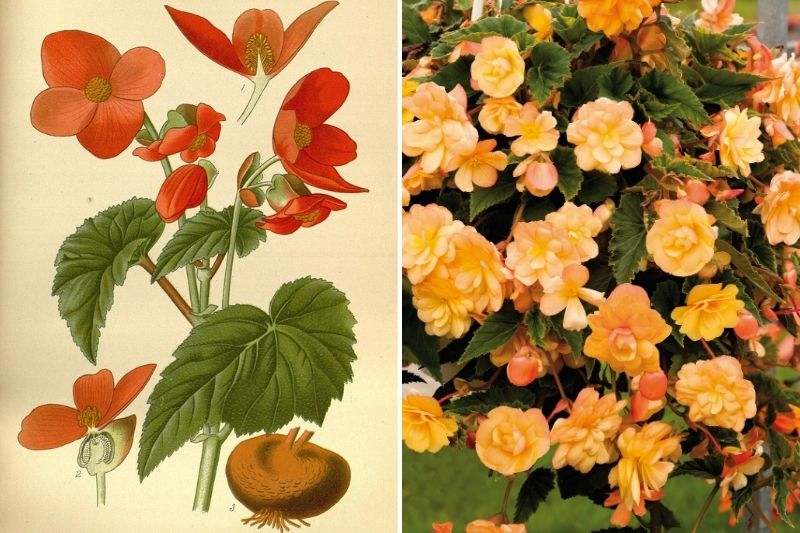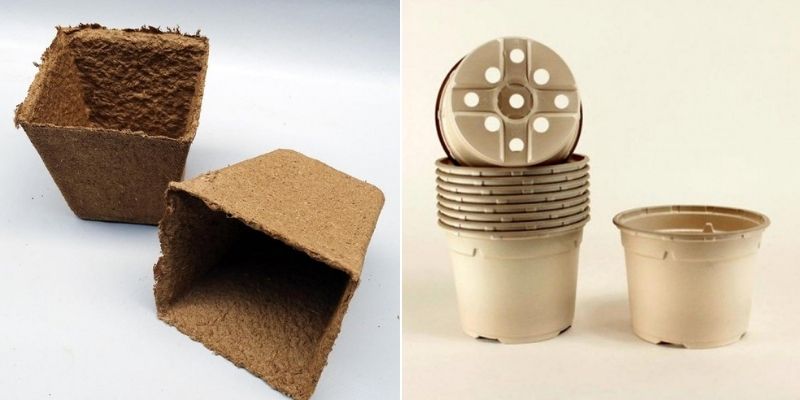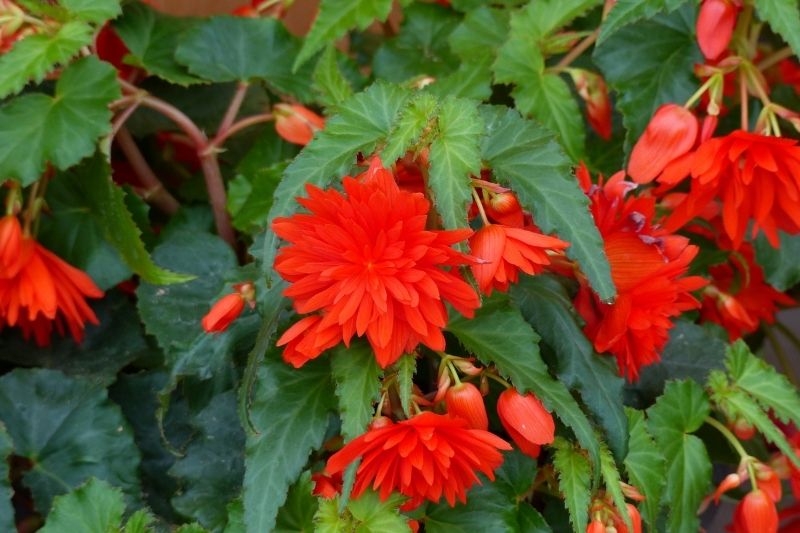With their pretty white, yellow, orange, pink or red flowers and decorative foliage, tuberous begonias brighten up gardens and balconies, and even the inside of our homes. These are non-hardy perennials that prefer a shady or semi-shady position. They flower in summer, between June and October, then go dormant in winter. As they are sensitive to cold, they are only planted outdoors from May onwards, after the frost period, and brought indoors to a warm and dry place in autumn.
For germination, tuberous begonia bulbs need warmth. If you want earlier flowering, the trick is to force them into growth by temporarily placing them in a warm spot. Discover all our tips for forcing a tuberous begonia.

On the left, botanical illustration of the Tuberous Begonia; on the right, new variety of Tuberous Begonia 'Illumination Apricot Shades'
When to force a tuberous begonia?
You can force tuberous begonias from March or April onwards.
What equipment do you need?
- a tray or buckets (our buckets made from plant fibres are 100% natural and biodegradable!)
- sowing compost

How to force a tuberous begonia?
- Choose firm, healthy tubercles
- Fill the tray or buckets with sowing compost or a mixture of compost and sand. Firm the surface
- Place the tubercle on the substrate without burying it. The flat side of the tubercle should be placed soil-side down, as it is on the other, concave side that the buds will grow. To prevent water stagnating on this concave part of the bulb and risking rot, you can tilt the bulb slightly. This will allow excess water to drain away.
- Water the substrate and place in a sheltered spot at a minimum temperature of 18 °C in a bright location but not in direct sunlight.
- Water regularly so that the substrate remains moist without ever being waterlogged, at the risk of rotting the tubercle.
- After 1 month, the tuberous begonias will have developed shoots and roots. They are then ready to be planted in the ground or in pots.
- If you plant them outdoors, it is best to do so in May, after the frost period.
- Choose a semi-shady or shady position, and plant them in a well-draining substrate, spacing them 25 cm apart. Water regularly and apply fertiliser daily to help them flower.
Discover our complete begonia collection!

































Comments